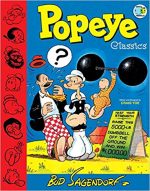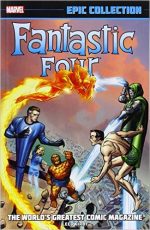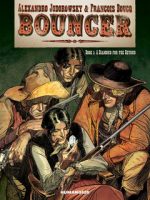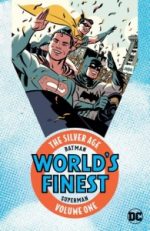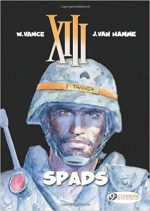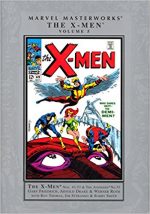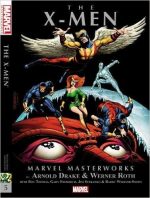New Revised Review
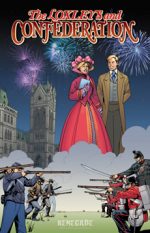
By Mark Zuehlke, Alexander Finbow, Niigaanwewidam James Sinclair, Claude St. Aubin, Christopher Chuckry & Todd Klein & (Renegade Arts Entertainment)
ISBN: 978-0-9921-5089-1
The Dominion of Canada officially came into existence on July 1st 1867. With the 150th anniversary looming imminent, what better time to revisit how that happy circumstance came to be, especially as the fine folk at Turnaround Distribution have just sent me a splendid full-colour hardback book all about it…
As you’d expect from the residents of the largely sensible portion of the North American continent, the residents of Canada have been planning their celebrations for some time now. A few years ago, a superb graphic novel was produced by an independent creative outfit called Renegade Arts Entertainment which commemorated the anniversary and captivatingly explored how America and the British colonies clashed. The book was The Loxleys and the War of 1812: a welcoming fictionalisation of history for youngsters, examining the facts of the clash through the eyes and experiences of one extended family caught up in the conflict. You could read our review but you’d be far better off getting the book itself.
After enjoying great success the story was followed this magnificent sequel which recapitulates the fateful first European incursion into the vast northern regions, the (mostly) shameful interactions with the native peoples there and the complex, dramatic campaign which resulted in a disparate aggregation of fiercely independent colonies finally accepting that they were all stronger together…
Written by Canadian military historian Mark Zuehlke, with story contributions from Alexander Finbow and scholar, commentator, author, and advocate on Indigenous Issues Niigaanwewidam James Sinclair, this compulsively engaging story is illustrated with captivating veracity by Claude St. Aubin with colours courtesy of Christopher Chuckry and lettering from Todd Klein.
The show opens with a character gallery of both the fictitious Loxleys and notable historic personages of the period and includes an impassioned Foreword by co-writer Finbow, before the graphic elucidation begins with a Prologue set in 1534.
In that landmark year French explorer Jacques Cartier sails up what will be later be called the St. Lawrence River. Sadly the “civilised†trailblazer then acts rather rudely towards the natives he finds there…
After that rather inauspicious start, grudging trades are made but when Cartier finally leaves he takes with him the two sons of local chief Donnacona. The Frenchman still wants treasure and insistently urges the native boys to direct him to a priceless valuable they call “Kanataâ€â€¦
Skipping ahead to 1864 we find the Loxley clan has grown in numbers, prosperity and influence. It is August 1st and 13-year old Lillian is recording in her journal the event of the family’s first great gathering in years.
Amidst the usual chatter of aging, absences and ailments, the elders are preoccupied with a thorny political problem. The United States has been at war with itself for four years but that struggle is almost over and the local consensus is that many Yankee warhawks are eager to continue fighting; using their deplorable political tenet of “Manifest Destiny†to conquer and possess the entire continent, not only from East to West but also from South to North…
The only bulwark against such unvarnished empire-building is a unified nation to resist them rather than the loose association of independent British colonies that now exists. While talk of Confederation has been in the air for quite a while, little headway has been made in each colony’s obstinate, insular ruling assemblies…
Now, with invasion from the USA a serious prospect once more, and economic pressures also working against the disunited and isolated enclaves, the move towards a grand union of the regions and territories is more vital than ever and politicians are actually talking to each other and making progress.
The prospect is of particular interest to young Lillian, who is subsequently invited to accompany her illustrator mother and journalist grandfather as they journey first to Prince Edward Island, then Quebec and eventually all over and around the scattered colonies and even to England itself: following the prominent political movers and shakers seeking to build a safe, strong and resilient nation.
As the little group follows the torturous efforts to unify the imperilled regions, drama (and romance in the case of Lillian) is never far off. The debates perpetually appear to take one step forward and two back as regional issues and grudges always hold back the urgent drive to combine even as the outer world constantly impinges on what might seem to be a strictly colonial issue.
The Loxleys are in Washington and actual witnesses to the assassination of President Lincoln – the strongest voice against an invasion of Canada. They later witness for themselves the extent of anti-Canadian feeling which exhibits as the annulment of trade deals in the Capitol, and demagogic aggression and bombast in New York which results in a brutal raid on neighbouring cross-border township New Brunswick. The invasion is carried out by radical activist Fenians who believe they can parley such attacks on British possessions into independence for Ireland…
Of course, such an incursion can be seen only one way by the colonies previously holding out against an official union…
Thus unfolds an amazingly compelling lesson which traces a largely marginalised section of history, couched in absorbing human terms and rendered totally irresistible for being seen through the lens of an idealistic child’s eyes: a girl becoming a woman whilst her little bailiwick became a mighty nation…
Also woven into the tale – thanks to the input of Niigaanwewidam James Sinclair – is a telling examination and assessment of the shameful Official Policy of assimilation which legitimised the maltreatment of indigenous people throughout Canada’s history: a trend more fully probed in the Afterword: Looking for Kanata.
That sobering discussion follows further historically pertinent extracts ‘From the Dairy of Lillian Stock 1867’ which encapsulate events personal and national following the establishment of Canada as a nation-state.
Informative, engaging, even-handed and intensely gripping, this account of ordinary people at the core of grand historical accomplishments is an astonishingly readable chronicle which again proves one of my most fervently held beliefs: comics are the perfect means to wed learning with fun and a well-made graphic treatise is an unbeatable mode with which to Elucidate, Educate and Enjoy.
So buy this and do so…
The Loxleys and Confederation © 2015 Renegade Arts Canmore Ltd.

